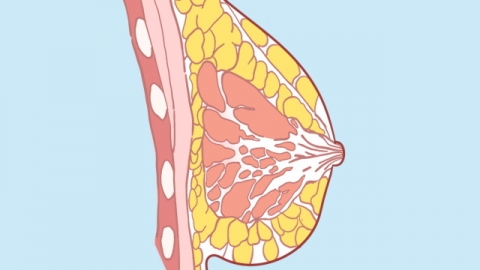What are the causes of inverted nipples?
Generally, nipple inversion may be caused by genetic factors, age-related changes, improper clothing, mastitis, or breast fibroadenoma. It requires symptomatic management through general treatment, medication, or surgical intervention. If physical discomfort occurs, prompt medical consultation is recommended to avoid delay in treatment. A detailed analysis is as follows:

1. Genetic Factors
Nipple inversion may have a hereditary component. If there is a family history of nipple inversion, the likelihood of it occurring in offspring increases. In such cases, the condition typically does not present with additional symptoms but rather manifests as a persistent breast characteristic that does not require specific treatment.
2. Age-related Factors
With advancing age, the fat and connective tissue within the breast gradually decrease, weakening the breast support structure. The skin and muscle tension in the nipple and areola area also decline, which may lead to nipple inversion. Regular breast self-examinations and professional check-ups are recommended. Maintaining a healthy lifestyle and avoiding external pressure on the breasts is also advised.
3. Improper Clothing
During breast development, prolonged wearing of tight clothing or overly restrictive undergarments may compress the breast area, affecting normal nipple protrusion and resulting in nipple inversion. This may be accompanied by symptoms such as underdeveloped breasts and impaired local blood circulation. Wearing loose and appropriately fitting undergarments to reduce breast compression is recommended.
4. Mastitis
Mastitis is an inflammatory condition of the breast caused by bacterial infection. Repeated episodes of mastitis can lead to fibrosis of the surrounding breast duct tissue, causing nipple inversion, often accompanied by breast swelling, pain, fever, and other symptoms. It is recommended to follow medical advice and use medications such as minocycline hydrochloride capsules, bromocriptine mesylate tablets, or Rupixiao capsules for treatment.
5. Breast Fibroadenoma
Breast fibroadenoma is a benign tumor within the breast. When it grows to a certain size, it may exert pressure on the nipple, leading to inversion, potentially accompanied by symptoms such as breast lumps and tenderness. Regular follow-up examinations are recommended to monitor changes in the mass. If necessary, surgical removal via procedures such as vacuum-assisted excision or Mammotome surgery may be performed to relieve pressure on the nipple.
In daily life, maintaining good lifestyle habits and proper breast care practices can help prevent nipple inversion.
References
[1] Meng Xiaoshan, Hu Hong, Liu Zhiyong. Clinical Research Progress on High-Intensity Focused Ultrasound in the Treatment of Breast Fibroadenoma [J]. Medical Frontier, 2025, 15(02): 27-30+34.
[2] Ding Mei. Caring for Women's Health: How to Scientifically Manage Acute Mastitis? [J]. Health Must-Read, 2025, (08): 110.






